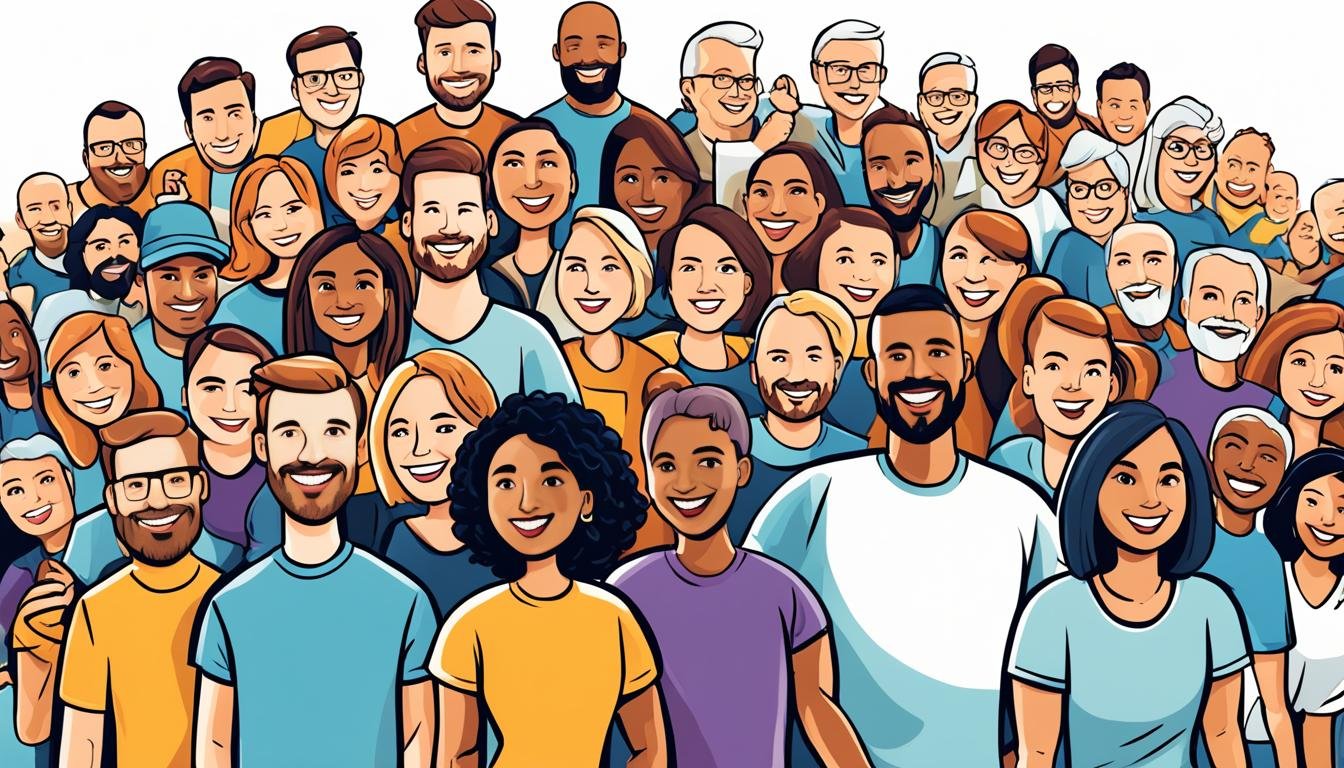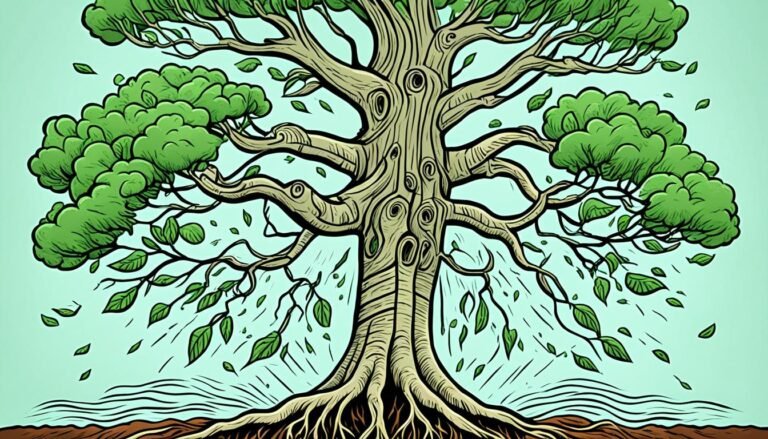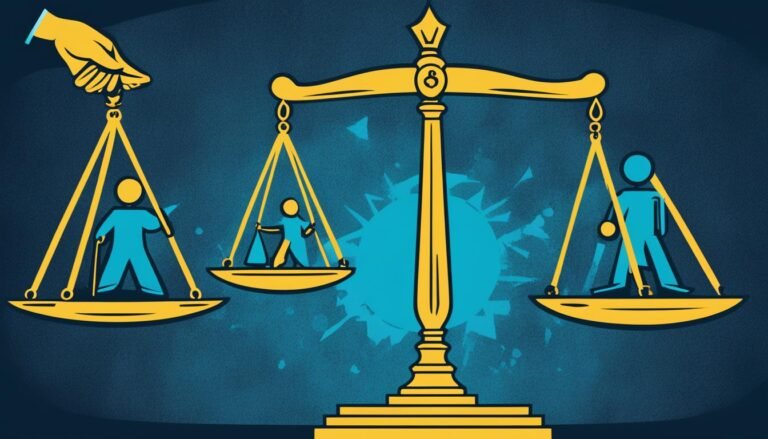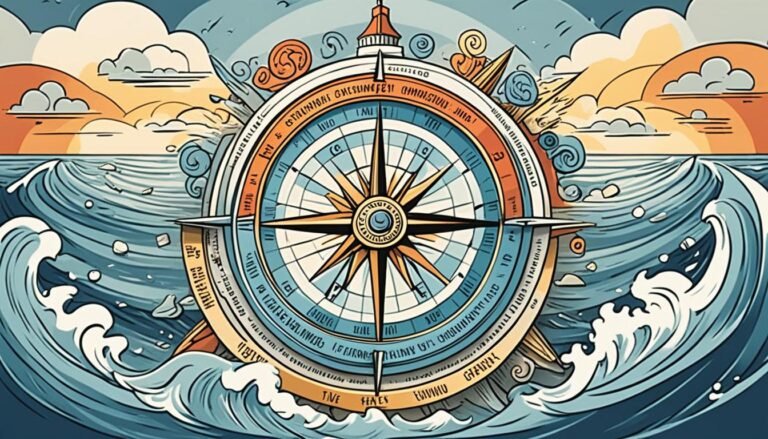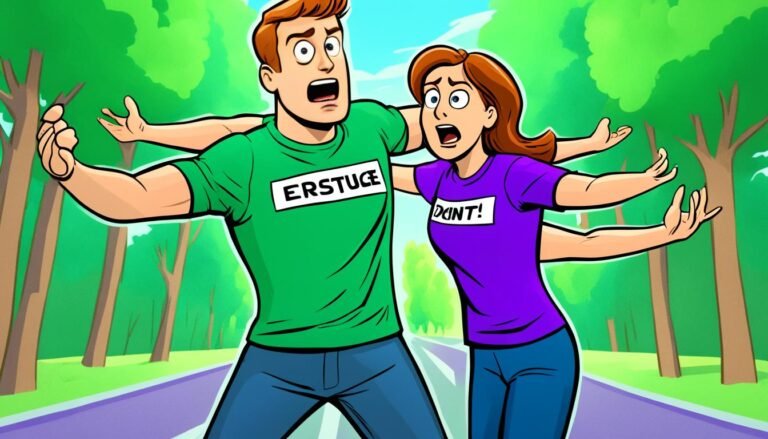Building Resilient Communities: Strengthening Bonds through Support and Collaboration
“Alone we can do so little; together we can do so much.” – Helen Keller
Building resilient communities isn’t only about getting ready for bad times. It’s about setting up strong links through support and teamwork. This makes people feel they belong and helps them face big challenges like climate change together. Today, it’s more important than ever for communities to join hands. They need to focus on lasting progress, strong social ties, and the best ways to deal with emergencies.
This article will dive into what makes communities strong, looking at getting ready for disasters and adjusting to a changing climate. We’ll also talk about how city plans and getting the community involved are key. Working together is the heart of creating communities that can last and do well.
Key Takeaways:
- Building resilient communities requires support and collaboration at various levels.
- Disaster preparedness and climate adaptation are essential for community resilience.
- Sustainable development and social infrastructure play a crucial role in building resilience.
- Community engagement and active participation are key to strengthening social bonds.
- Effective emergency management strategies are vital for community resilience.
Understanding Community Resilience
Community resilience is crucial for dealing with disasters and challenges. It helps build communities able to recover from tough times. We’ll look at how disaster preparedness and sustainable development support this.
Being ready for disasters is key to making communities strong. Planning for things like natural disasters and health crises helps lower their harm. It also makes it easier to bounce back.
“Disaster preparedness is key for community resilience. It means giving communities the tools to respond well to disasters. This investment can save lives, protect property, and help things return to normal fast.”John Smith, Disaster Management Expert
Sustainable development is vital for resilience too. It’s about meeting current needs without stopping future ones. When things like homes, travel, and energy are developed sustainably, communities are stronger against disasters.
“Sustainable development matters a lot for resilience. It’s more than an environmental concern. It helps communities use resources better and become fairer and more welcoming.”Dr. Anna Garcia, Sustainability Expert
The Interplay of Disaster Preparedness and Sustainable Development
Disaster readiness and sustainable development work together. They make each other better. This means, being ready for disasters helps sustainable development be stronger. And, working towards a sustainable future supports getting through disasters.
Working on both helps make communities resilient. They can adjust, recover, and do well despite challenges. Knowing and using these ideas helps build a safer, lasting world.
Strengthening Social Infrastructure
Social infrastructure is vital for a community’s strength. It provides the needed support for people and groups to do well. This support includes spaces for people to come together, talk, and get involved.
Community engagement is a big part of social infrastructure. It means involving community members in decisions and actions. This gives individuals a voice in what happens in their areas. It also builds trust between people and a strong sense of belonging.
When people work together to build and take care of their areas, these places become stronger. The effort and responsibility shared make a solid support team. This group can handle challenges and tough times well. Working with everyone, from residents to businesses, helps create social infrastructure that meets the community’s needs.
“Community engagement is the bridge that connects individuals, organizations, and infrastructure, creating a resilient, cohesive, and vibrant community.” – Jane Thompson, Community Development Specialist
Community engagement isn’t just about helping each other. It’s also a chance to share knowledge and ideas. Everyone can learn from each other through talks, workshops, and events. This helps find new ways to tackle problems.
Moreover, social infrastructure fights for fairness and against social differences. It makes sure everyone can get things like healthcare and education. This makes the community a fair place where everyone can succeed.
The image below shows a lively community center. It’s a great place for various activities that bring people together:
Key Benefits of Strengthening Social Infrastructure:
- Promotes community cohesion and social bonds
- Encourages active citizen participation and shared responsibility
- Fosters a sense of belonging and inclusion
- Enhances knowledge-sharing and innovation
- Addresses social inequalities and promotes equity
By making social infrastructure strong and engaging the community, we can build places that overcome challenges and thrive.
Climate Adaptation and Resilient Communities
As the impacts of climate change grow, understanding climate adaptation and community resilience is key. It’s crucial to build communities that can handle and recover from these issues. This is vital for our society’s health and strength.
Climate adaptation means taking proactive steps to reduce climate change’s negative effects. It involves figuring out each region’s unique risks. Then, we come up with ways to lower those risks and get better at adapting.
“Climate adaptation is about more than just reacting to changes; it’s about building communities that are strong, adaptable, and able to thrive in the face of challenges.”
On the other hand, community resilience is a community’s power to respond and recover. This includes keeping things going and feeling normal again after facing challenges. It’s not just about the physical; it’s how the community pulls together socially, economically, and environmentally too.
Both climate adaptation and community resilience work together. By planning for the climate in community projects, we make our communities stronger. This means looking at climate risks in building, using solutions from nature, and supporting eco-friendly actions.
Also, investing in climate adaptation offers many advantages. It improves health, cuts down on economic losses, and boosts well-being. This helps communities not just survive climate changes but do well in them.
Examples of Climate Adaptation Measures
When we talk about climate adaptation, there are many strategies out there. These aim to cut risks and make us tougher against climate challenges. Some of these strategies are:
- Infrastructure upgrades: Making our critical infrastructure, like bridges, stronger against climate risks such as floods and hurricanes.
- Land-use planning: Using climate predictions in city planning to reduce impact and support sustainable growth.
- Community education and awareness: Teaching people about climate change and how to deal with it through programs and campaigns.
- Nature-based solutions: Using nature to help by saving wetlands, making green spaces, and fixing ecosystems. This helps fight climate change and offers other benefits to society.
Putting these measures into place with help from the community, stakeholders, and new tech can make a big difference. Adaptation strategies must fit the community’s situation and be checked regularly. This is how we take on changing climate risks.
Integrating Resilience into Urban Planning
To make cities resilient and enjoyable places to live, we must blend resilience into urban plans. Urban planners use sustainable principles to design areas ready for future issues. This way, cities can better handle challenges and changes.
Planning for the long-term success of cities matters a lot. It means thinking about how land is used, building things like roads and parks, and planning for getting around. These choices affect how people feel and the health of the planet. By adding in plans for resilience, cities can cope better with all sorts of problems.
One main step is to use sustainable thinking in urban planning. This means finding the right mix of money, the environment, and social needs for lasting solutions. It includes looking at how we use energy, building in a green way, and designing for a changing climate. Doing this helps fight off the worst effects of climate change and makes cities places where people and nature thrive.
Also, it’s crucial to put communities first in planning. When local people help plan their own areas, it adds a lot of value. Everyone’s thoughts and knowledge come together to plan. This makes sure the final city plan really meets the needs of its people and is stronger for it.
Benefits of Integrating Resilience into Urban Planning
Integrating resilience has many upsides. First, it lets cities ready themselves for disasters or tough economic times. Planning for, and lessening, the worst effects on people’s lives is a big part of this.
It also helps create cities that use resources wisely and are kind to the environment. By planning carefully, cities can cut down on harmful emissions. They can boost how efficiently they use energy. This is good for the Earth and makes life better for everyone.
“Integrating resilience into urban planning leads to the creation of sustainable and livable cities that can withstand and recover from challenges, benefiting both people and the planet.” – Jane Smith, Urban Planner
Last, making cities resilient this way helps with money, grows economies, and makes people come together. Cities that can deal well with changes seem like great places to be. They attract new investment, jobs, and people. This helps everyone live better and builds strong, happy communities.
Putting resilience at the heart of city planning is a smart move. It sets the stage for building communities that are tough, use resources well, and can overcome any future issues. By bringing together sustainable ideas and the thoughts of local people, urban planners can make cities that last for a long time.
Enhancing Emergency Management for Resilience
Effective emergency management is key in resilient communities. It is vital when dealing with natural disasters or other crises. Preparedness, response, and recovery are crucial.
Emergency management includes measures to reduce risks and keep people safe. It also offers help quickly. With detailed plans, communities can get ready for dangers and gather resources.
To boost community resilience, teamwork and coordination are essential in emergency management. This means working together with the public, local leaders, and organizations. A joint effort helps communities be ready for hard times.
“In the face of adversity, effective emergency management acts as a catalyst for community resilience. It empowers individuals, strengthens social bonds, and provides a framework for unified response and recovery.”
Being ready for emergencies never stops. It involves teaching people about risks, having drills, and setting up good ways to share information. This way, when trouble strikes, people and communities can react better.
- Preparedness: Making plans, checking risks, and setting up ways to talk.
- Response: Running emergency centers, helping with rescues, and aiding those in need.
- Recovery: Fixing roads, offering mental health care, and rebuilding the community.
Investing in emergency preparations makes communities strong now and in the future. By keeping plans up to date, they can handle new risks and keep everyone safe.
Enhancing Emergency Management with Technology and Data
Technology has changed how we handle emergencies. Tools like early warnings and real-time tracking are now available. Geographic Information Systems (GIS), social media, and data analysis help teams take quick, smart actions.
GIS helps map threats and decide on safe paths. Social media spreads updates fast, keeping communities connected and informed.
To make communities resilient, we need a full plan. This includes getting ready, improving how we respond, and working together. With these steps, communities can recover from disasters, making a better future for all.
Promoting Community Engagement for Resilience
Community engagement is key for resilience and disaster prep. It means coming together as friends and neighbors. By working hand in hand, we make our neighborhoods safe and strong.
When people in the community are active, they know more about dangers. They also figure out ways to avoid problems before they arrive. This makes everyone ready to deal with bad situations.
Joining forces in the community does more than keep us safe. It also brings us closer together. This closeness means we can depend on each other in tough times. Plus, it helps us think of new ways to solve problems.
“Community engagement is about empowering individuals, giving them a voice, and involving them in decision-making processes.”
Benefits of Community Engagement
- It increases our understanding of risks and how to prepare.
- It makes us communicate and work better with each other.
- It makes us trust and support each other more.
- We become better at handling emergencies together.
- We have chances to learn and teach new skills.
Community engagement is also vital in recovery. When we all pitch in, the healing process goes faster and smoother.
Encouraging community involvement boosts our resilience. It helps us take charge of our own safety. And it makes our bonds stronger, ready to face any disaster together.
For example, think about a community that practices emergency drills often. Everyone helps in these drills. This makes them understand safety better. And it makes them look out for each other more.
There’s a truth in the words, “Together we are stronger.” Through community, we learn the power of joining hands. We forge communities that not only survive but also flourish, no matter what’s thrown our way.
Sustainable Development for Resilient Communities
Sustainable development is key to creating strong communities. It wants to balance economic growth, protect the environment, and keep people healthy and happy. This approach helps communities handle different challenges well and secures a good future for those to come.
One important thing in being sustainable is preparing communities to bounce back from bad events. This includes things like disasters, tough economies, or big changes in society. Spending on disaster plans, growing places where people can get together, and getting folks involved all help make a community strong for the long run.
When we talk about strong communities, having good places that offer help and services is crucial. These are things like schools, clinics, places where people can meet, and public spots. Investing in these spaces makes a community better at getting through hard times and offering ways for people to connect, make money, and find help when they need it.
Also, sustainable development looks at how business, the environment, and society affect each other. It knows you can’t have a strong economy if you’re hurting the environment or making people poor. When we grow the economy in a smart way, keep the planet safe, and treat each other fairly, our communities thrive and are ready for the future.
“Sustainable development is not a destination but a journey. It requires continuous efforts and collaboration among various stakeholders to create communities that are economically vibrant, environmentally sustainable, and socially inclusive.”
Example: The Role of Renewable Energy in Building Sustainable and Resilient Communities
Switching to renewable energy, like sun, wind, and water power, is a great step towards sustainability. It cuts the need for fossil fuels, lowers harmful emissions, and makes our way of getting energy better. This not only helps our planet but also makes communities tougher by making them less dependent on changing energy costs and supplies.
Using renewable energy also helps the economy by creating green jobs and bringing in money for sustainable projects. It makes sure everyone can afford energy, making life better for all. This helps keep the lights on for everyone and fights against poverty related to energy.
Putting sustainable ideas at the core of what we do makes communities more ready for the future. To be strong, communities need to look at all parts of life and make sure they care for everyone, now and for years to come.
Collaborative Approaches for Building Resilience
Working together is key for strong communities. When people, groups, and organizations join forces, they can do more. They share skills and resources to make life better for everyone.
The Power of Collaboration
Collaboration allows us to do better by working together. It lets different groups pool their knowledge and skills. This way, we can come up with new and better ways to solve problems.
“Working together is essential for tough challenges and making our communities strong. When we combine efforts, we can build a future that’s good for everyone.” – Jane Davis, from Resilient Communities Society.
Successful Examples of Partnerships
In the past, we’ve seen how partnerships can improve communities. For example, GreenCity Foundation and CityCo teamed up. They made cities more environmentally friendly and brought people together. This made communities stronger for the future too.
Then there’s the Sustainable Schools Initiative. It involves schools, governments, and local groups. Its aim is to teach kids about being kind to the planet. Kids learn to make a difference and grow up knowing how to protect their community.
Collective Action for Sustainable Resilience
Collective action is vital for strong and lasting communities. When the people, groups, and leaders in a place work together, they can solve many problems. They can make their home a better place for everyone.
Take the Community Resilience Network, for example. It’s a group of people and organizations that want to make their community tough yet caring. They do things like prep for emergencies, create gardens, and teach various skills. These actions lay a solid ground for a future where everyone thrives.
Building Resilient Communities through Education and Awareness
Education and awareness are key in making communities strong. They help people know what to do when faced with challenges. This knowledge improves our communities’ ability to bounce back from disasters.
Teaching people about being ready for disasters is crucial. This means showing them how to make plans and gather supplies. It also means knowing when danger is near.
Talking about the importance of looking after the planet is also important. We should use less and protect the environment. This way, we can fight against climate change and create places that can cope with big changes.
It’s also vital to get everyone involved. Working together, we can share what we know and help each other be ready. This makes us care more about where we live and how we can make it better.
Education is the most powerful weapon which you can use to change the world. – Nelson Mandela
In the same way, teaching and making people aware helps support better laws and ways to make our places safer. When folks understand the good these can do, they’re more ready to work together for them.
So, making it a point to educate and create awareness is vital. By teaching people and giving them the power to act, we’re paving the way for strong and ready communities.
Innovations and Best Practices in Community Resilience
Communities are tackling more challenges today than before. They are using new, smart ways and working together to be more resilient. This means getting better at handling changes.
In Seattle, Washington, the Sustainable Neighborhoods Program is changing how people live. It helps residents choose greener daily habits. You can learn to save energy, cut waste, and use eco-friendly ways to move. These steps help areas deal with eco and money issues better.
“We think building community resilience starts with what each person does. Showing people how to help and giving them tools mean we all make a stronger, greener world.”
Barcelona has a smart way of dealing with problems before they get big. They use a Smart City Resilience Dashboard. It watches data closely to see any dangers. This lets the city act fast and use tools well to keep everyone safe.
Getting different groups to team up is key in the San Francisco Bay Area. They started the Resilient by Design project. It brought together experts in buildings, cities, and making things safe. They found smart ways to deal with big waves and earthquakes. Working together like this makes the community safer for all.
Fostering Innovation through Knowledge Exchange
Knowledge exchange platforms are really important for new ideas and sharing good ways to do things. These bring people together to talk about what works and what doesn’t. They share tips to get better at being ready for change.
Through new thinking and sharing of smart ways, communities can be stronger and more flexible. This leads to lasting solutions that meet each place’s unique challenges. We need to keep learning, working together, and sharing ideas. Then, we can all live better, even when times are tough.
Conclusion
Creating resilient communities is key. By focusing on disaster readiness, we lower the harm from unexpected events. This keeps people safe. Also, sustainable growth helps communities face social, economic, and environmental tests. With these practices, we pave the way for a strong and green future.
Social infrastructure is vital for resilient communities, encouraging close ties and a sense of belonging. Through teamwork and sharing, residents tackle issues collectively. This process builds a stronger, connected community ready to face any challenge.
As the future looks more uncertain, building resilience is very important. Including disaster planning, sustainable steps, social connections, and working as a team leads to a brighter future. Let’s work together to make our communities ready, flexible, and unified against hard times. This benefits both current and future people.

